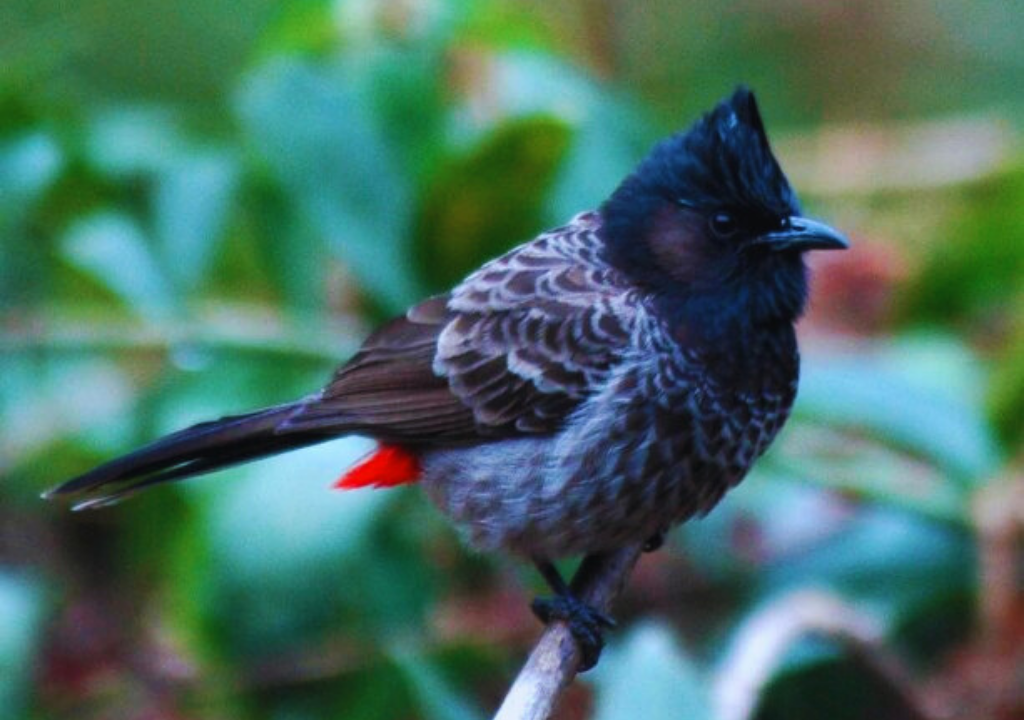“🦜 Dive into avian wonders! Explore bird watching in Rajaji National Park’s diverse habitats. A paradise for bird enthusiasts. 🌿 #RajajiBirds”
Bird Watching and Rajaji National Park
Boldly venturing into the realm of nature, bird-watching reveals a world teeming with avian wonders. Among the prime sanctuaries for this captivating activity lies Rajaji National Park, a haven of biodiversity in Uttarakhand, India. Here, the melodious symphony of chirps and the graceful dances of feathered creatures create an enchanting experience that resonates with both seasoned bird enthusiasts and curious novices.
The Avian Diversity of Rajaji National Park
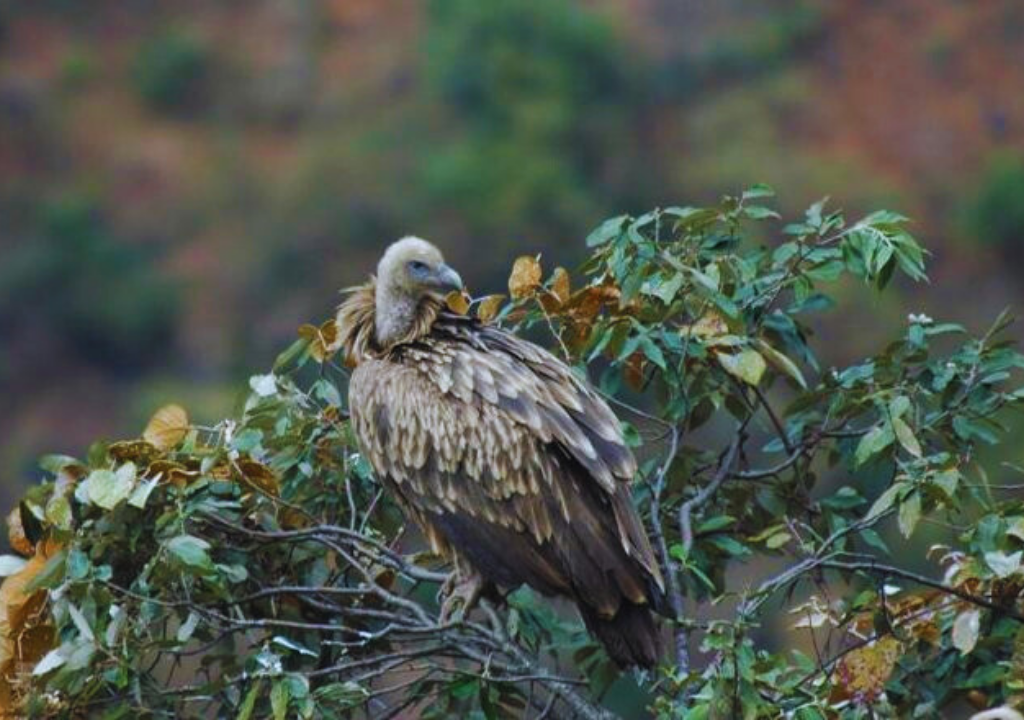
Nestled amid the lush landscapes of Rajaji National Park is a treasure trove of avian diversity. Over 315 species of birds have been recorded within its boundaries, showcasing a vibrant tapestry of colors, calls, and behaviors. From the regal raptors soaring high to the charming warblers hidden amidst the foliage, Rajaji offers a front-row seat to the captivating lives of these aerial residents.
Best Times for Bird Watching
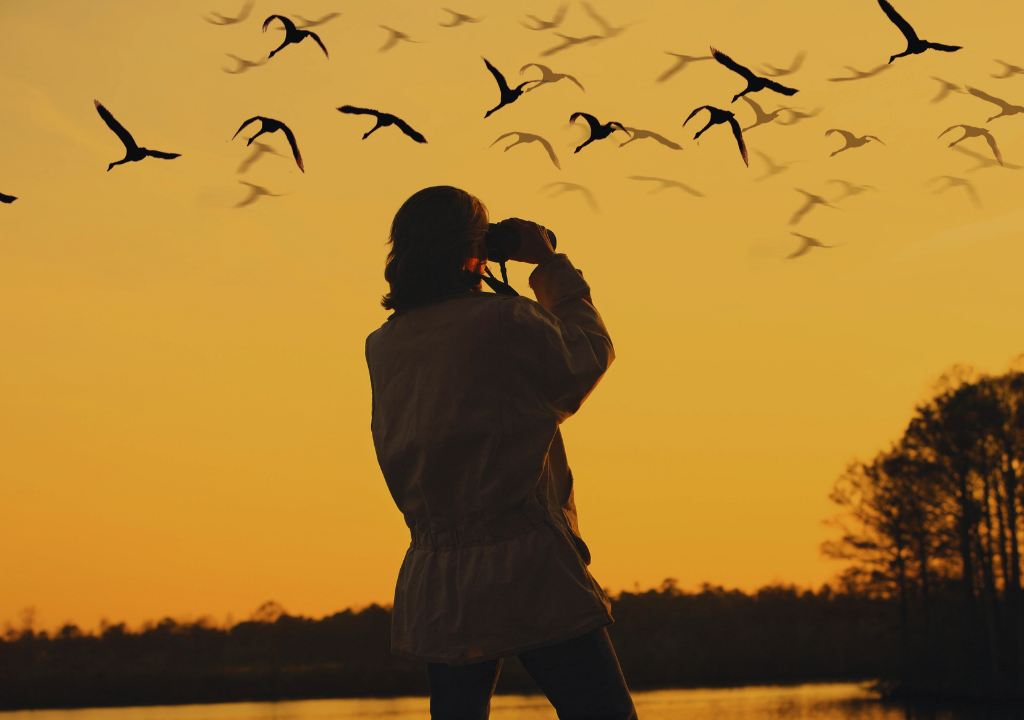
Bird-watching enthusiasts and nature lovers alike are drawn to Rajaji National Park’s vibrant avian population. With its diverse habitats and rich biodiversity, the park offers an exceptional experience for bird watchers. To make the most of your bird-watching expedition, it’s crucial to choose the right time when the feathered residents are most active and visible. Here’s a guide to the best times for bird watching in Rajaji National Park:
1. Winter (November to February): Winter is the prime bird-watching season in Rajaji National Park. During these months, the park becomes a haven for migratory birds that seek refuge from colder regions. The pleasant weather and abundant food sources make it an ideal time for both resident and migratory species to thrive. You can expect to spot a wide range of colorful and rare birds, including thrushes, flycatchers, pheasants, and various waterfowl.
2. Spring (March to April): As the weather begins to warm up, bird activity reaches its peak during spring. Resident species engage in courtship displays and nesting activities, leading to increased sightings and bird songs. The trees and flora also start to bloom, creating a picturesque backdrop for bird-watching.
3. Post-Monsoon (October to November): The post-monsoon months mark the onset of the migratory bird season. With the recent rains, the park’s vegetation is lush and vibrant, attracting both local and visiting avian species. This period offers a unique opportunity to witness the transition between seasons and the changing bird populations.
Tips for Successful Bird Watching:
-
Early Mornings: Birds are most active during the early hours of the day. Plan your bird-watching sessions during the early morning to maximize your chances of spotting various species.
-
Quiet Observation: Maintain a low profile and move quietly to avoid startling the birds. Binoculars and a field guide can help you identify and appreciate the species you encounter.
-
Patience and Persistence: Bird-watching requires patience. Spend time observing the surroundings and wait for birds to reveal themselves.
-
Respectful Distance: Keep a respectful distance from the birds and their nests. Avoid disturbing them, as this could disrupt their behavior.
-
Guided Tours: Consider joining guided bird-watching tours led by experts. Their knowledge of the park’s birdlife can enhance your experience.
Popular Bird-Watching Spots
Rajaji National Park, a paradise for bird enthusiasts, is a treasure trove of avian diversity. Explore these popular bird-watching spots to witness a symphony of colors and melodies that grace the park’s diverse ecosystems.
-
Chilla Range: The Chilla Range offers a delightful bird-watching experience along the Ganges River. The riverside habitat attracts a variety of waterfowl, including kingfishers, herons, and ducks. Keep an eye out for the elusive crested serpent eagle and the vibrant plumage of the Indian roller.
-
Motichur Range: The Motichur Range’s mixed forests and grasslands provide an ideal setting for bird watching. You can spot a range of species, from the spotted owlet to the pied kingfisher. Don’t miss the chance to observe parakeets, barbets, and woodpeckers amidst the foliage.
-
Chilla-Motichur Elephant Corridor: This corridor is a hotspot for avian activity due to its connectivity between the Chilla and Motichur Ranges. Keep your binoculars handy to spot raptors like the changeable hawk-eagle and reptile birds like the Indian treepie.
-
Ranipur Range: The lush forests of the Ranipur Range are a haven for bird watchers. Listen to the melodious tunes of warblers, cuckoos, and thrushes as you explore this picturesque area. Keep an eye on the treetops for glimpses of hornbills and flycatchers.
-
River Banks and Water Bodies: Rajaji National Park’s rivers and water bodies are a magnet for birdlife. Stroll along the river banks to catch sight of the white-capped water redstart and wagtails. Marshy areas host the colorful common kingfisher and the elegant pied wagtail.
-
Dense Canopy Areas: Seek out the park’s dense canopy areas for a chance to spot canopy dwellers such as the oriental white-eye and the black-hooded oriole. The vibrant plumage of these birds contrasts beautifully with the green foliage.
-
Neelkanth Road: The road leading to Neelkanth Mahadev Temple is a hidden gem for bird watchers. Look for the Himalayan bulbul and the verditer flycatcher among the thickets. The temple’s surroundings provide an idyllic setting for observing both birds and nature.
Binoculars and Equipment
Essential Gear for Bird Watching
Equipped with the right tools, bird watching becomes a fascinating expedition. Binoculars, field guides, and a notebook to record your observations are essential companions for any enthusiast. Binoculars, in particular, serve as your window to the avian world, allowing you to appreciate intricate details and behaviors.
Tips for Effective Bird Watching
- Choose comfortable clothing and footwear to enhance your mobility and minimize distractions.
- Practice patience and stillness, allowing birds to become accustomed to your presence.
- Observe habitats such as tree canopies, water bodies, and open clearings for diverse sightings.
- Use field guides and apps to identify and learn about the birds you encounter.
A Glimpse into Rajaji’s Avian Residents
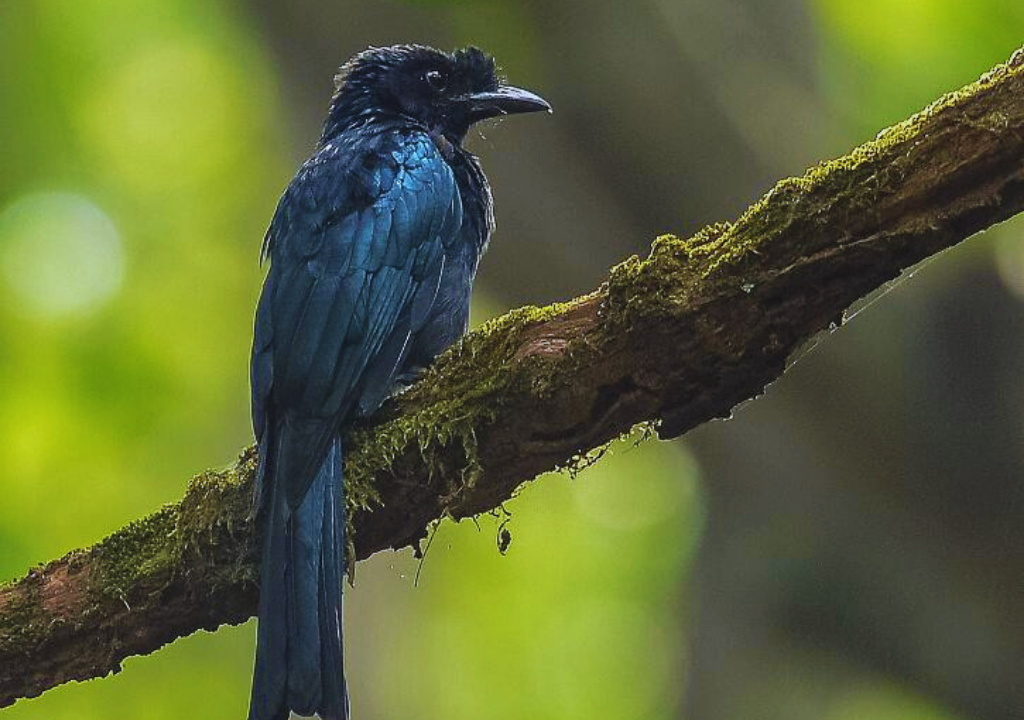
Resplendent Kingfishers: The Riverside Gems
Rajaji’s water bodies host an array of dazzling kingfisher species. The pied kingfisher’s aerial acrobatics and the vibrant plumage of the common kingfisher add vibrant hues to the park’s landscape. These riverside gems offer a captivating display of fishing prowess.
Majestic Raptors: Lords of the Skies
The skies above Rajaji National Park are ruled by majestic raptors. The crested serpent eagle’s piercing gaze and the soaring flight of the oriental honey buzzard showcase the park’s impressive raptor diversity. Witnessing these birds of prey in their natural habitat is a spectacle that evokes both awe and admiration.
Bird Watching Etiquette and Conservation
Respecting Nature and Habitats
Bird watching is not just a hobby; it’s a responsibility to protect and conserve our avian friends and their habitats. While indulging in this activity, maintain a respectful distance from nests, roosting sites, and feeding areas to avoid disturbing the birds and their routines.
Minimizing Disturbance to Birds
Practice the “Leave No Trace” principle by refraining from leaving behind any trace of your visit, such as litter or disturbance to vegetation. Refrain from playing recorded bird calls, as this can disrupt the natural behaviors and communication of the birds.
The Thrill of Rare Sightings
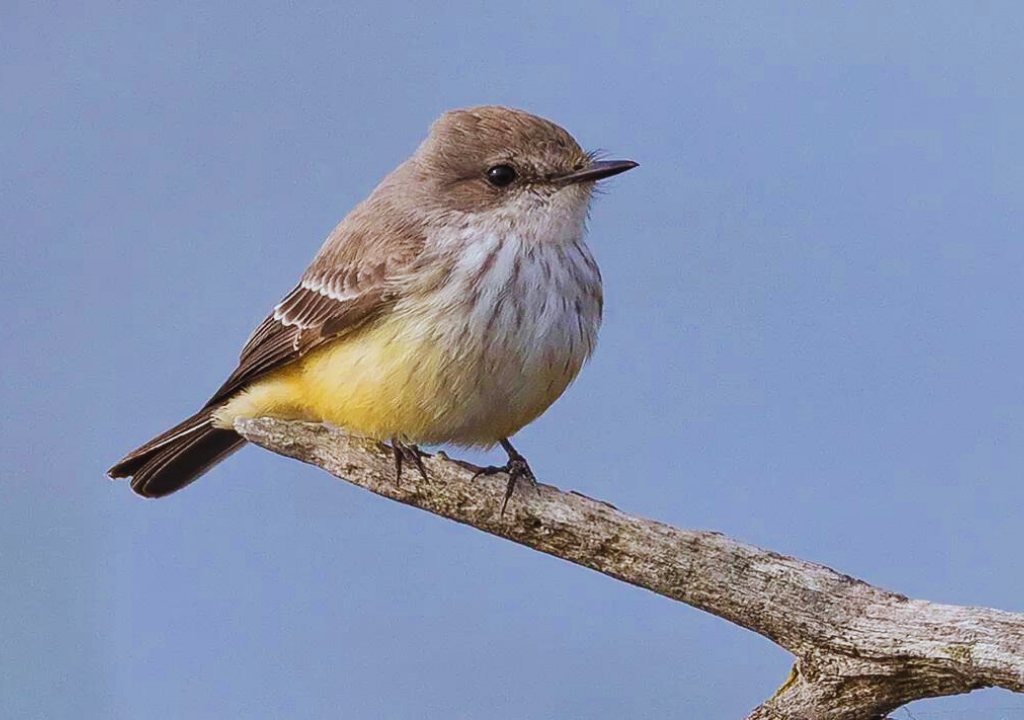
Encountering Elusive Species
The heart of bird watching lies in the thrill of rare and uncommon sightings. The chance to lay eyes on species like the Great Hornbill or the Rufous-bellied Woodpecker adds an element of excitement to each outing. The pursuit of these elusive treasures turns every moment into a potential discovery.
Contributing to Citizen Science
Engaging in bird watching goes beyond personal enjoyment. By recording your observations and contributing to citizen science initiatives, you play a vital role in avian research and conservation. Your sightings become valuable data that aid in understanding bird populations and their changing patterns.
Capturing Moments: Bird Photography
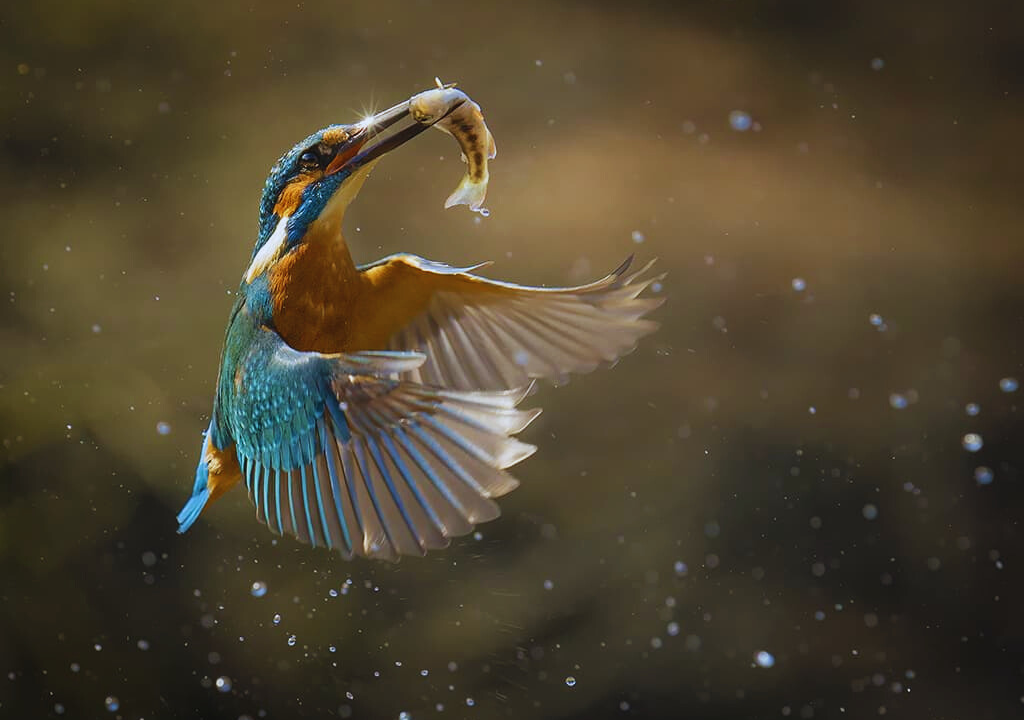
Capturing Moments: Bird Photography in Rajaji National Park
Enter a realm of feathered beauty and grace! Discover the art of bird photography in the enchanting landscapes of Rajaji National Park. With its diverse avian population and breathtaking surroundings, this sanctuary offers a canvas of opportunities for photographers to capture the elusive charm of birds in their natural habitat.
1. Preparing for the Journey: Pack your camera gear, including a telephoto lens for capturing distant birds, a tripod for stability, and extra batteries and memory cards. Research the park’s bird species and their behaviors to anticipate their movements.
2. Choose the Right Time: The golden hours of early morning and late afternoon provide soft, warm light that enhances your shots. Birds are most active during these times, increasing your chances of capturing them in action.
3. Patience and Observation: Successful bird photography requires patience. Observe the birds’ behavior, feeding patterns, and flight paths to anticipate their movements and capture candid moments.
4. Composition and Background: Pay attention to the composition of your shots. Use the rule of thirds to create balanced and visually appealing images. Ensure a clutter-free background that highlights the bird’s features.
5. Freeze the Action: Birds are often in motion, so use a fast shutter speed to freeze their movements and capture sharp images. A shutter speed of at least 1/1000th of a second is recommended for crisp results.
6. Focus on the Eyes: The eyes are the windows to a bird’s personality. Ensure that the eyes are in sharp focus, as they draw the viewer’s attention and add depth to your photographs.
7. Capturing Flight: Photographing birds in flight can be challenging but rewarding. Use continuous autofocus to track moving subjects, and experiment with panning to convey a sense of motion.
8. Camouflage and Patience: Wear neutral, earth-toned clothing to blend into the surroundings and minimize your presence. Birds are more likely to approach when they don’t perceive a threat.
9. Respect and Ethics: Prioritize the welfare of the birds and their habitat. Avoid disturbing nests or getting too close to breeding areas. Respect park rules and guidelines for responsible photography.
10. Post-Processing: Enhance your images in post-processing by adjusting exposure, contrast, and sharpness. Keep the edits subtle to maintain the authenticity of the moment.
11. Storytelling Images: Capture not just the bird’s physical features, but also its interactions, expressions, and environment. These elements create storytelling images that evoke emotions.
Connecting with Nature Through Bird Watching
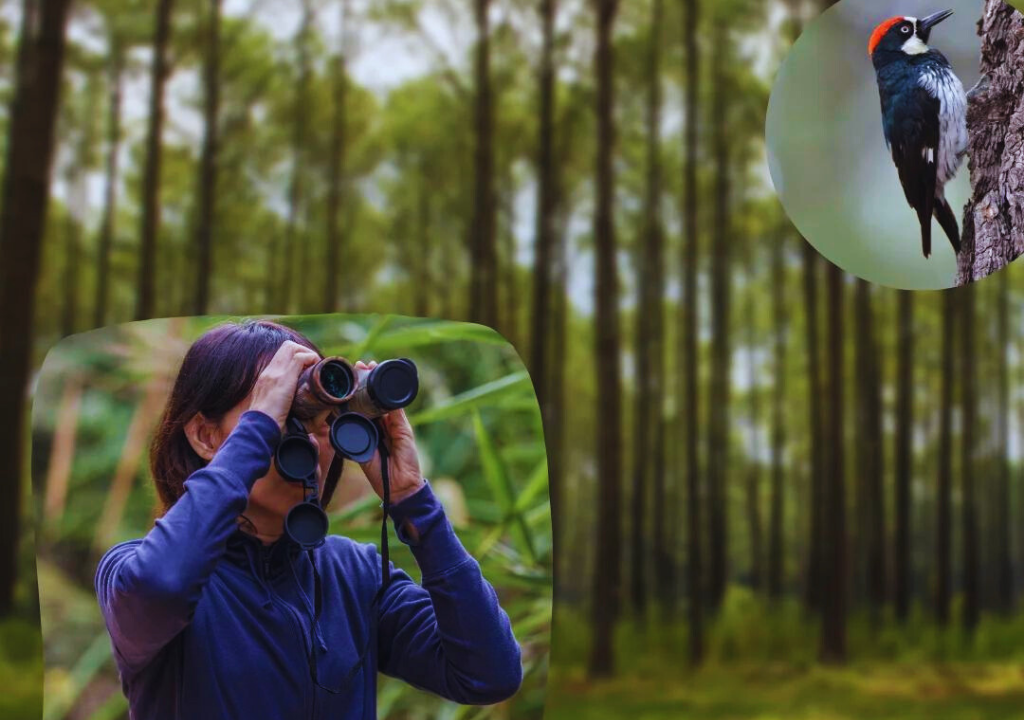
Embark on a soul-nourishing voyage that transcends time and boundaries – the art of bird watching. Amidst the breathtaking landscapes of Rajaji National Park, discover a profound way to connect with nature and embrace the soothing rhythm of life itself.
-
A Meditative Pursuit: Bird watching isn’t merely an observation; it’s a meditative practice that brings you into the present moment. As you focus on the graceful flight of a bird or the delicate notes of its song, the noise of the world fades, and a tranquil stillness envelops you.
-
Nature’s Symphony: Every bird has a unique song, a melody that carries stories of its habitat, behavior, and interactions. Listening to these harmonies is like tuning in to nature’s symphony, a reminder of the intricate web of life that surrounds us.
-
Observing Patterns: Bird behaviors reveal a world of patterns and rhythms. The way they forage for food, build nests, and communicate is a testament to the intelligence woven into their existence. Witnessing these patterns connects you to the primal rhythms of the Earth.
-
Mirroring Resilience: Birds are resilient creatures, adapting to changing environments and conditions. Their migrations across vast distances and their survival instincts mirror the strength and adaptability of the natural world. Their stories inspire our own resilience.
-
Ecosystem Awareness: Bird watching isn’t confined to the observation of a single species; it encompasses an understanding of ecosystems. Observing the interactions between birds, plants, and other creatures deepens your appreciation for the delicate balance that sustains life.
-
Mindful Presence: The pursuit of bird watching cultivates mindfulness. As you patiently wait for a glimpse of a bird, your senses heighten, and you become attuned to the smallest details of your surroundings, fostering a sense of unity with nature.
-
Conservation Compassion: Engaging with birds on a personal level sparks a passion for their protection. Witnessing their vulnerability in the face of habitat loss and climate change kindles a fire within us to contribute to their preservation.
-
Shared Experiences: Bird watching fosters connections with fellow enthusiasts, fostering a sense of community and shared purpose. Sharing anecdotes, tips, and discoveries creates bonds that transcend geographical boundaries.
Conclusion
Bird watching in Rajaji National Park is an enchanting odyssey that unveils the captivating lives of feathered inhabitants. From the vibrant hues of kingfishers to the regal flight of raptors, each moment spent in observation adds a brushstroke to the portrait of nature’s harmonious symphony. Embrace the tranquility, indulge your curiosity, and embark on a journey that not only celebrates avian wonders but also deepens your connection to the world around you.
FAQs about Bird Watching in Rajaji National Park
What types of birds can I expect to see in Rajaji National Park?
Rajaji National Park is home to a diverse range of bird species due to its varied ecosystems, which include forests, grasslands, and rivers. Some of the bird species you can expect to see there include Indian Peafowl, Great Hornbill, Oriental Pied Hornbill, Crested Kingfisher, Brown Fish Owl, Himalayan Pied Kingfisher, Himalayan Rubythroat, White-capped Water Redstart, and many more.
Are guided bird-watching tours available in the park?
Yes, guided bird watching tours are usually available in Rajaji National Park. These tours are led by experienced naturalists or birding experts who can help you identify different bird species, provide information about their behavior and habitat, and enhance your overall birding experience.
Is bird watching suitable for beginners and families?
Bird watching is indeed suitable for beginners and families. It’s a relaxing and educational activity that can be enjoyed by people of all ages. National parks like Rajaji often have well-marked trails and knowledgeable guides who can assist beginners in spotting and identifying birds.
What should I bring with me for a successful bird-watching outing?
To have a successful bird watching outing, consider bringing the following:
- Binoculars: A good pair of binoculars will help you observe birds from a distance.
- Field Guide: A bird identification guide specific to the region can be invaluable for identifying species.
- Notebook and Pen: You can jot down observations, sketches, or notes about the birds you encounter.
- Comfortable Clothing and Footwear: Dress appropriately for the weather and wear comfortable walking shoes.
- Water and Snacks: Stay hydrated and carry some snacks for energy.
- Insect Repellent: Protect yourself from insect bites, especially in forested areas.
- Camera: Capture memories of your bird sightings.
- Patience and Silence: Birds can be shy, so patience and silence are key to spotting them.
How can I contribute to bird conservation efforts through my bird-watching activities?
Bird watching can contribute to conservation efforts in several ways:
- Data Collection: You can participate in citizen science projects that collect data about bird populations and migrations. Apps like eBird allow you to record and share your sightings, contributing to important scientific databases.
- Education: By learning about birds and sharing your knowledge with others, you raise awareness about the importance of bird conservation.
- Support Conservation Organizations: Consider donating to or volunteering with organizations dedicated to bird and habitat conservation.

